-
1 of 253523 objects
Ruralia Commoda c.1490-95
28.8 x 20.7 x 3.3 cm (book measurement (conservation)) | RCIN 1057436
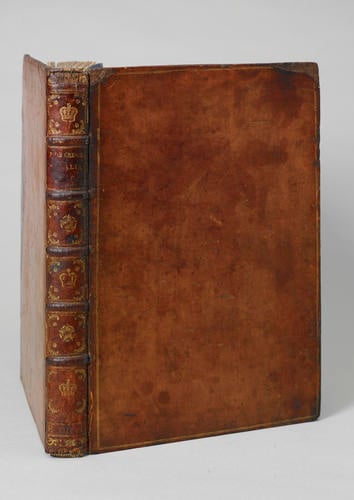
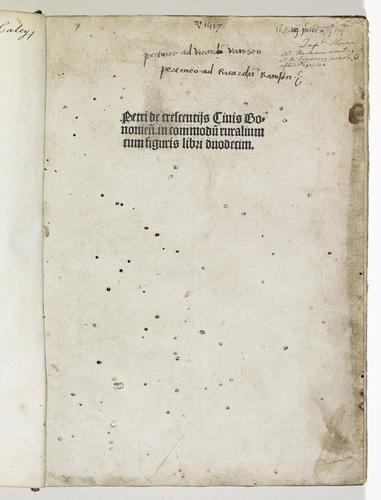
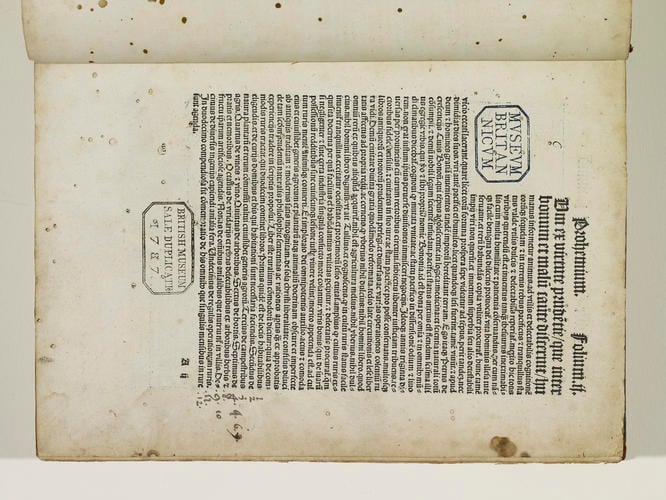
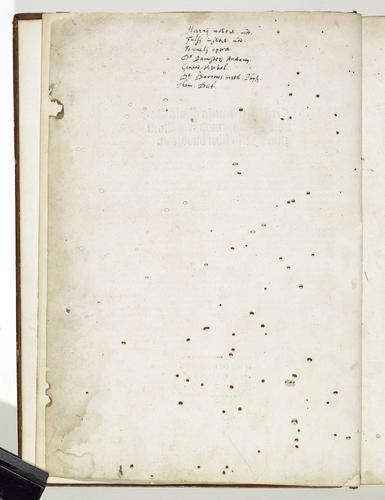
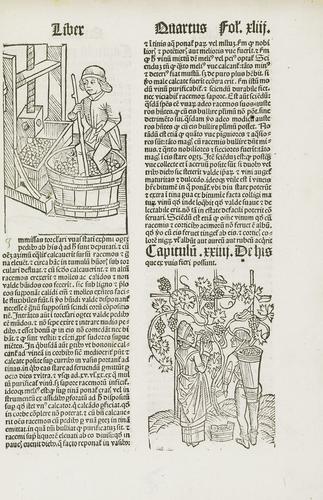
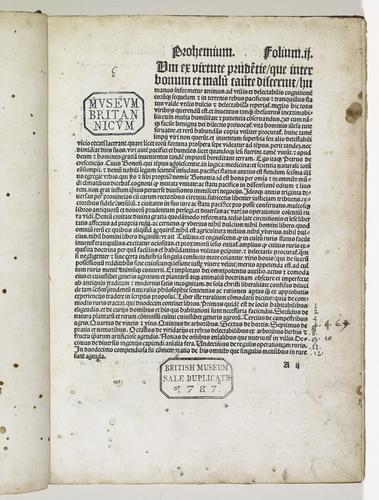
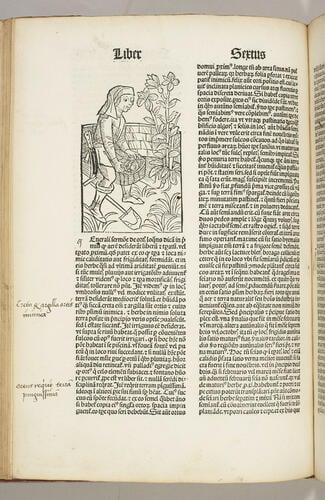
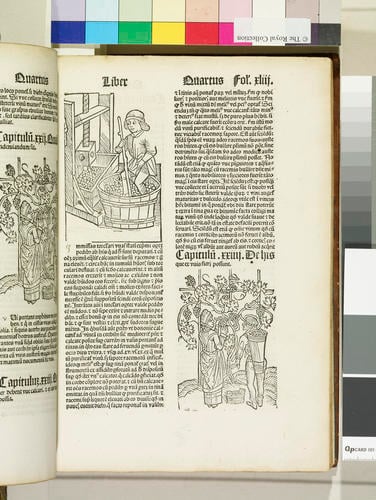
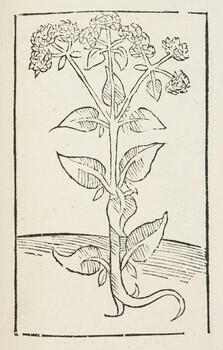
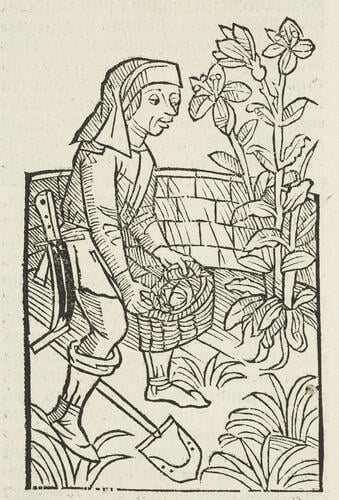
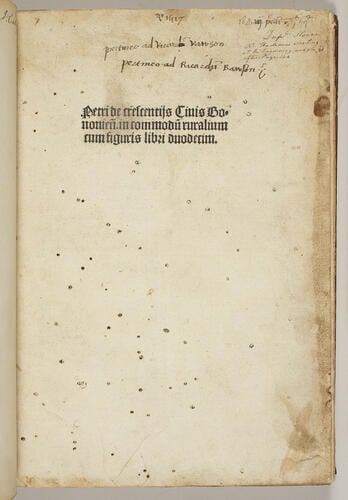
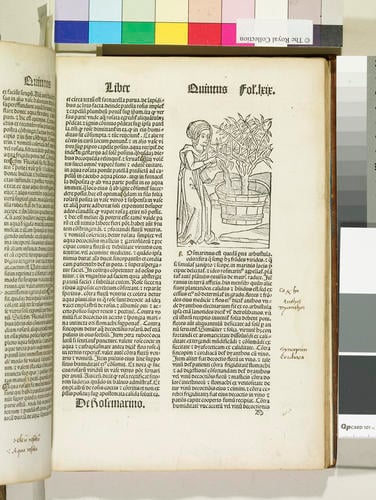
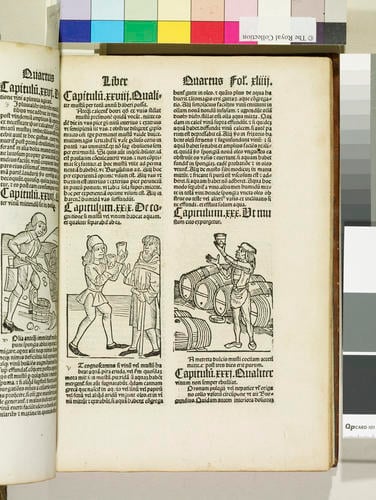
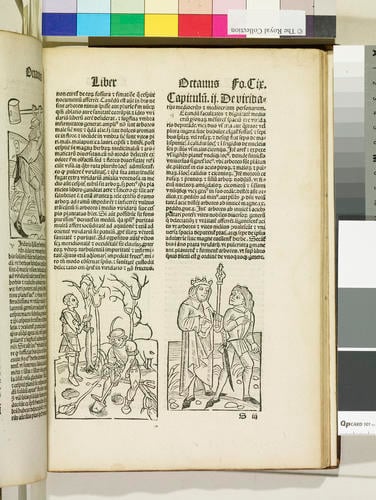
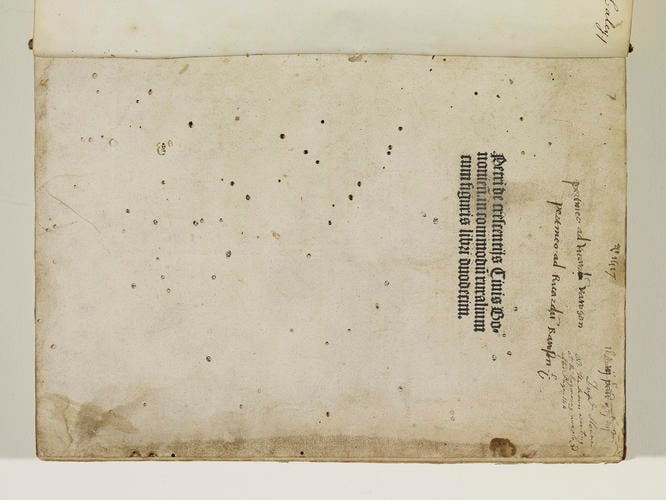
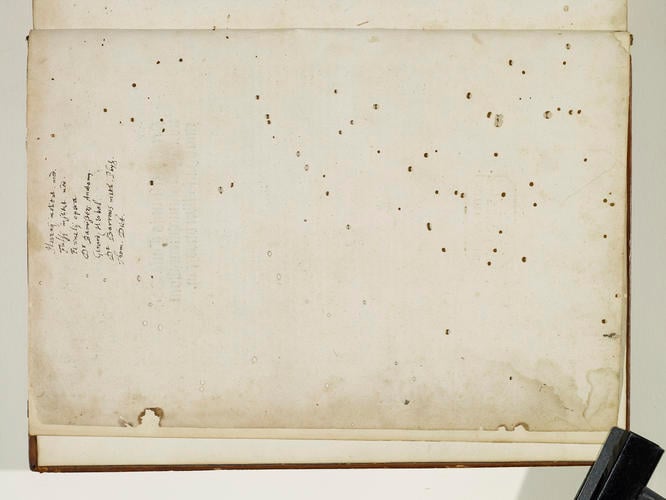
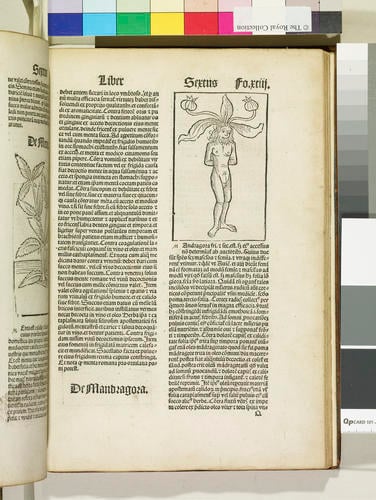
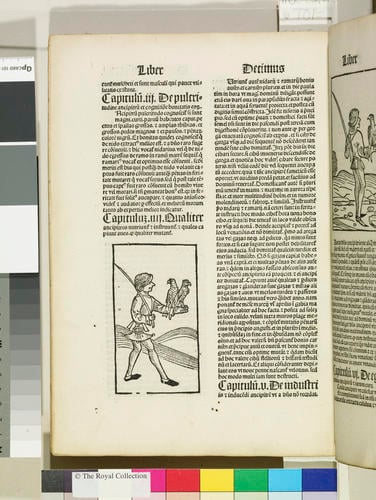
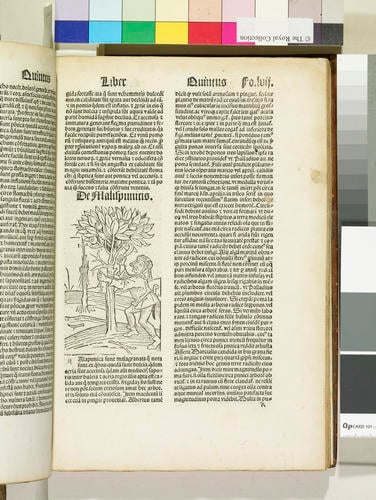
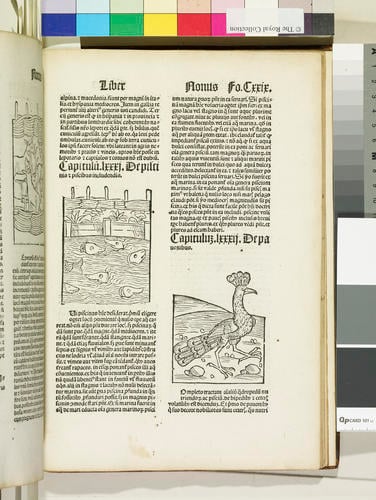
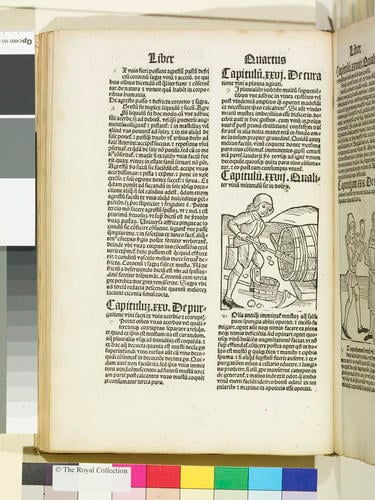
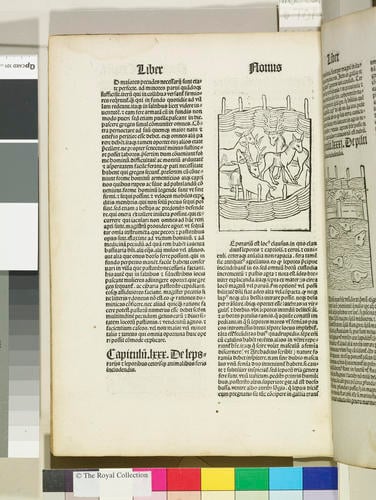
-
The Ruralia commoda is considered the most important agricultural treatise of the Middle Ages. It was written in the early fourteenth century by the Bolognese jurist Pietro de Crescenzi, who based his work on ancient and contemporary sources as well as his personal experience. The practical and encyclopedic nature of his “manual” was to benefit its main audience, the emerging urban bourgeoisie, by covering husbandry, irrigation, enology, gardening, hunting, fishing while also describing plants and animals.
The success of his work is suggested by the fact that it was soon translated into several European vernaculars, and printed in fifteen different editions in the fifteenth century alone. This copy was printed by Peter Drach in Speyer, an edition characterised by fine woodcut illustrations.
Binding description
Brown calfskin decorated with double gilt fillets to form a border; gilt roll on board edges. Spine with five raised bands and laced on boards, decorated with gilt tools (roses and crowns) and titling. Endpapers of blue pastepaper.Provenance
The book has been associated with Henry VIII’s library at Whitehall Palace for a long time. The ‘1517’ inscribed on the title page (f.1r) was formerly interpreted as an inventory number, but it does not correspond to any entry in any of Henry VIII’s libraries, including Whitehall. More likely, it is the year 1517. If so, it may be related to the book’s first documented owner, Henry VIII’s chaplain Richard Rawson (d.1543), who penned his ex libris beneath the ‘1517’ on the title page. Upon Rawson’s death, the book may have passed on to Henry VIII: there is no evidence to confirm or refute this hypothesis.
Subsequently, the volume belonged to Sir Hans Sloane (1660-1753) whose library became one of the British Museum’s founding collections. While at the British Museum, the spine was stamped ‘H VIII R’, revealing that the book was believed to have come from the Old Royal Library. It was then sold in the Museum’s duplicate book sale of 1788 (stamped 1787; lot 4535) and purchased for 8s by the antiquarian John Caley (1760-1834). At some point in the nineteenth century, it belonged to the antiquarian J.T. Hand. It was sold at Sotheby’s on 12 May 1837 (lot 187) and acquired for the Royal Library at Windsor shortly after. -
Creator(s)
Acquirer(s)
-
Measurements
28.8 x 20.7 x 3.3 cm (book measurement (conservation))
Markings
annotation: brief signposts, small diagrams and maniculae in ?three hands; two in English ('elder' f.70r, same hand as f.49v and f.1 and the hand writing the list of books on f.1v, which at f.122v writes: "This excellent order...of ytali about Parma" referring to cows), the last one is Rawson's (e.g. ff.56r, 64v) [ff. 3r-v, 4v, 21r-v, 48r-49v, 56r, 58r, 64r-v, 67v-70v, 72r-v, 90r, 107r, 121r-v, 122v 123r]
Category
Other number(s)
ISTC : Incunabula Short Title Catalogue – ISTC ic00969000Alternative title(s)
Ruralia Commoda / Petrus de Crescentiis.
Petri de Crescentis in commodum ruralium cum figuris libri duodecim.
Place of Production
Speyer [Germany]